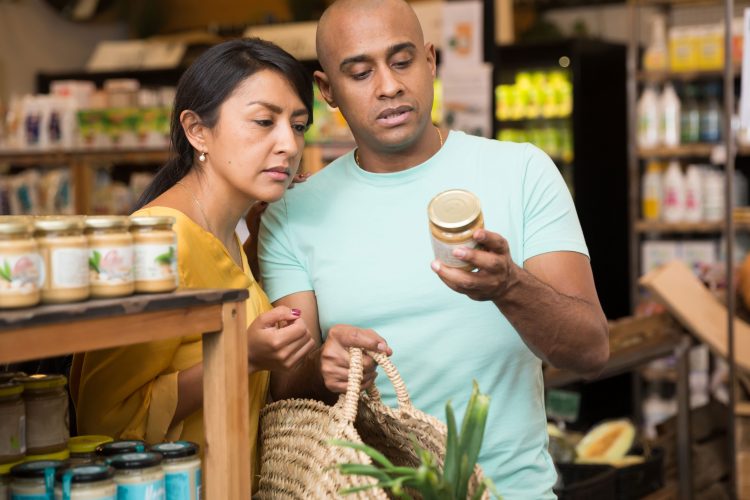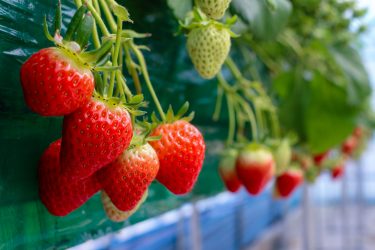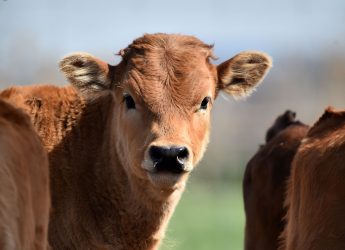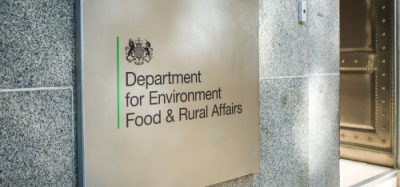Carbon labelling: the focus shifts from calories to climate
- Like
- Digg
- Del
- Tumblr
- VKontakte
- Buffer
- Love This
- Odnoklassniki
- Meneame
- Blogger
- Amazon
- Yahoo Mail
- Gmail
- AOL
- Newsvine
- HackerNews
- Evernote
- MySpace
- Mail.ru
- Viadeo
- Line
- Comments
- Yummly
- SMS
- Viber
- Telegram
- Subscribe
- Skype
- Facebook Messenger
- Kakao
- LiveJournal
- Yammer
- Edgar
- Fintel
- Mix
- Instapaper
- Copy Link
Posted: 19 April 2021 | Susan Brownlow | No comments yet
Susan Brownlow explains why carbon labelling is important to consumers and outlines some of the barriers to widespread adoption.


In the age of climate change activism, brands are now coming under greater scrutiny for their contribution to the climate emergency, with food and beverage front and centre of the debate.
Food production is responsible for one quarter of the world’s greenhouse gas (GHG) emissions1, with the meat and dairy industry responsible for approximately 14.5 percent of this; food packaging accounts for a further estimated five percent of the energy used in the lifecycle of a food product making it a significant source of GHG emissions.2,3
There is widespread scientific consensus on the urgency to reduce GHG emissions emanating from the food industry and on the need to find interventions to make that a reality.
Combating food industry emissions
While most activity in the UK to reduce these emissions has focused on technological solutions to deliver greater energy efficiencies and increased use of renewable energy sources, global food production, processing and transportation is highly complex so this can only have a limited impact on the GHGs associated with our diets.
Emilien Hoet, Head of climate consultancy, ClimatePartner, emphasises the need to urgently turn our attention to how we can ensure both the food industry and consumers engage in behavioural change to reduce consumption of foods causing the greatest environmental impact.
“There have been several studies which have looked at the merits of market-based initiatives to influence demand, such as carbon taxes on food products,” said Hoet. “But these are not without their challenges – and in any case, the government has recently shelved plans, at least for the foreseeable future, to introduce such a scheme without offering any other formal proposals to deal with the issue.”
“Climate activists and some corners of government have been calling for more behavioural interventions to influence food purchasing decisions, including carbon labelling on food packaging, for some time,” continued Hoet. “DEFRA advocated a social marketing approach towards behavioural change as far back as 2008 and the House of Commons Environmental Audit Committee stated that carbon labelling is crucially important in 2009.”4,5
“Yet today, consumers still have no broad based means by which to compare food product credentials, or the companies that produce them.”
Nevertheless, the call for labelling that not only tells us what a product contains, but what it costs the planet to make it, is gaining momentum.
The power of labels
With no legislation currently in place, those undertaking carbon labelling are doing so on a voluntary basis, encouraged by consumer demand, investors increasingly looking to limit risk in relation to climate, and what companies themselves see as a clever marketing tactic and potential competitive advantage.


Imported fruit may be more carbon-competitive if local fruit needs to be grown in heated greenhouses during the winter
“Food labelling is obviously nothing new,” said Hoet. “Producers must clearly display ingredients, calorific value, nutritional guidelines and, as of October, allergen information according to UK regulations. Labels extolling a product’s ethical virtues have also been in place for some time, with Fairtrade, the Soil Association, the Rainforest Alliance and organic labelling reassuring consumers as to their food’s provenance.”
Shoppers have come to expect labelling, using it to influence purchasing decisions. In a survey by FoodInsight, 80 percent of respondents claimed they often look at the nutritional information provided in some way, with 20 percent saying they always read the nutrition panel.6 So it seems to make sense that the next logical step would be to include carbon emissions on labels too.
In research among European consumers undertaken in January by ClimatePartner, half of respondents agreed that carbon emissions of a product are a factor in their purchasing decision, and 74 percent regard ClimatePartner’s own climate-neutral label as a decision making aid when shopping. Forty percent also recognised the label as an indication that the company responsible for the product is undertaking broader activities to combat to mitigate their climate impact.
Understanding our impact
However, carbon labelling across all food and drink categories is a big undertaking and further work needs to be done to communicate to the public at large the issues at stake and the importance of such an initiative. Originally published in 2011 and updated in 2019, an often cited study advocates for “the provision of the relevant skills, knowledge and decision tools in order to boost consumer decision making in food purchasing based on impact to the environment”.7
The study suggests that a major obstacle to diet change is consumers’ under-estimation of the environmental impacts of different types of food, creating a ‘blind spot’ when making purchasing choices. Authors of the study go on to state that many consumers are unaware, misinformed or only have a rudimentary understanding of the carbon impact of their food purchasing habits.8
For carbon labelling to be fully embraced by consumers, there is a need for broad-based education programmes and initiatives such as the carbon footprint calculator launched by the BBC in 2019. As well calculating the contribution of a particular food item depending on consumption, the calculator provides a comparable context easy for the consumer to understand – for example, eating chicken once a day equates to having 512 showers lasting eight minutes each.
“Factors contributing to carbon footprint go well beyond the often publicised methane emissions from cows, to include everything from deforestation and the use of nitrogen-based fertilisers, to artificially creating grazing land, and refrigeration and transportation still depending heavily on fossil fuels,” said Hoet. “So it is easy to see how many consumers will find it difficult to make the transition to more sustainable choices without access to independently verified information to empower them.”
A single food item’s environmental impact can vary hugely. One kilo of asparagus grown in South America and air freighted to the UK produces an estimated 8.9 kilos of CO2, while in-season locally grown asparagus will produce only a fraction of that, so it is little wonder that even relatively well-informed, non-meat eating consumers drastically underestimate the carbon footprint of their food.
The not so easy task of calculating emissions
Calculating the carbon footprint of food items is no simple undertaking. In January 2007, Tesco’s chief executive, Sir Terry Leahy, promised “a revolution in green consumption” as the company pledged to put carbon labels on all 70,000 of its products. By 2012, Tesco had abandoned the idea, citing the onerous amount of work needed to collect and analyse the data and the lack of other retailers joining them to create critical mass.
PepsiCo had also measured and displayed carbon footprint data on packets of Walkers crisps, cartons of Tropicana orange juice and boxes of Quaker Oats, but as with Tesco, abandoned the scheme.


Factors contributing to carbon footprint go well beyond the often publicised methane emissions from cows
“Apart from the rigorous collection of reliable data across all aspects of a food’s production, processing and distribution, there are technical issues in relation to measurement that need addressing,” Hoet confirmed. “Unequivocal and universal standards are urgently needed to prevent food manufacturers from misleading consumers about a products’ true carbon footprint.”
Non-standardisation could also mean that there are variations in how similar data is shared. Research has shown that if emissions were quantified and displayed on a per calorie basis, that broccoli emits more GHG than either pork or chicken. When that calculation is switched to one based on weight, the converse is true.9
There is also debate as to whether different GHG emissions such as methane and nitrous oxide should be aggregated into the carbon equivalent figure. Opponents to this argue that doing so fails to take into account that methane, for example, behaves differently to CO2 and has a shorter lifespan and therefore results in an overestimate of the carbon burden of products like beef.10
Others, such as scientist Christoph Meinrenken at the Earth Institute, Columbia University, claim measuring the impact of methane in an equivalent way to carbon, ie, over a long lifespan, actually dilutes its more potent short-term impact and given the imminent threat of climate change, that is what we should be focused on.11
A further challenge relates to seasonality. For example, fruit grown in the UK may have a lower carbon footprint than an imported alternative during the summer, but the imported fruit may be more carbon-competitive if the local fruit needs to be grown in heated greenhouses during the winter. In such instances, is there an argument for labelling to communicate to the consumer an annual aggregate value?
And what is to be done about emissions that cannot be avoided? “For those emissions that are not easily mitigated, the role of offsetting still needs to be incorporated into the equation,” Hoet emphasised. “Verified offset projects play an important role in tackling the remaining emissions that cannot be achieved through operational changes and transparency on these projects should be provided alongside carbon footprint data.”
The future of carbon labelling
Results from consumer studies around carbon labelling indicate that there is a lack of understanding as to the extent our food choices are impacting the environment and the carbon footprint for which they are responsible. However, they also show that consumers are open to becoming more informed and, in the main, would like to make food purchasing decisions which contribute to limiting climate change. But they need to be empowered to do so, and while carbon labelling would seem a fitting solution, ultimately, consumers can only buy what producers and retailers offer to them.
As carbon footprint information can be found on more and more packaging in some European countries; currently, there are only a few brands in the UK that provide carbon footprint information. Quorn and Oatly are two that have gained considerable media attention in recent months and Upfield, makers of Flora and Pro-Active plant-based spreads, have also announced plans to introduce carbon labelling, as has Unilever.
Consumers need to be able to make genuinely comparable choices within specific product categories. To enable this, the obstacles preventing the adoption of carbon labelling at critical mass level – including the creation of a standardised approach for calculating carbon footprint and a legal framework requiring companies to substantiate claims – need to be urgently addressed.
Carbon labelling is also likely to have an added benefit for producers, manufacturers and retailers in that it can help companies prepare for an era of carbon taxes and a world in which consumers will expect to account for their own personal impact on the environment.
References
- Hannah Ritchie; 2019; Food Production is Responsible for One Quarter of the World’s Greenhouse Gas Emissions
- UN Food and Agricultural Organization
- Monforti-Ferrario & Pinedo Pascua; 2015; Energy Use in the EU Food Sector: State of Play & Opportunities for Improvement; European Commission JRC Science & Policy Report
- DEFRA; 2018; A framework for Pro-Environmental Behaviours Report; London
- House of Commons Audit Committee; 2009; Environmental Labelling; Second Report of Session 2008–09; London; The Stationary Office Ltd
- The International Food Information Council Foundation; 2019; Food and Health Survey
- Camilleri, Larrick, Hossain & Patin-Echeverri; 2019; Consumers Underestimate the Emissions Associated with Food but Are Aided by Labels; Nature Climate Change; Volume 9
- IBID
- Tamar Haspel; 2014; Vegetarian or omnivore: The environmental implications of diet; The Washington Post
- Availability of disaggregated greenhouse gas emissions from beef cattle production: A systematic review; 2019; Volume 76; Pages 69-78
- Megan Tatum; 2020; Will Carbon Labels on Our Food Turn us Into Climatarians?; Discover Magazine
About the author
Susan Brownlow has had three decades of researching and writing on the latest food and beverage technology trends on behalf of some of the world’s most pioneering innovators.
As a tri-national, holding British, American and EU citizenship, she has a truly global perspective on the important issues around food safety and security facing our world today.
Related topics
Related organisations
ClimatePartner, Department for Environment Food and Rural Affairs (Defra), Fairtrade, FoodInsight, Oatly, PepsiCo, Quorn, Rainforest Alliance, Soil Association, Tesco, Upfield








